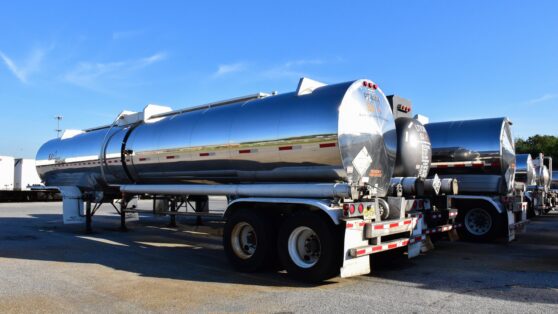Fleet operation costs can make or break your company. Saving just enough enables profit and faster ROI but holding back on essential expenses could drive away valuable staff and run you red in the long term. Fleet managers need to find that delicate balance of saving and spending for the business to continue growing. Are there specific costs you should spend less on?
Read on to find out the different costs that run a fleet company and how you can maximize each for your business’ advantage.
Breaking Down the Total Cost of Ownership
All your company’s fixed asset purchases along with the expenses incurred during operation comprise the cumulative price of your total cost of ownership (TCO). To simplify the last sentence, you can categorize everything you have paid for into two categories:
- Fixed costs are all expenses that stay constant no matter how large or small your sales or transportation services have become. These include taxes, insurance, vehicle insurance and depreciation, licenses, rental costs, loans, permits, and any lease payments.
- Operating costs comprise the day-to-day expenses required of maintaining the fleet business, such as fuel, tires, parking, tolls, and maintenance.
Calculating Cost-Per-Mile
You can accurately record your TCO using the above categories. Once you have these costs, you can calculate the cost-per-mile with this formula:
(Fixed Costs + Variable Costs) / Miles Driven = Cost-Per-Mile
The cost-per-mile is computed yearly or monthly. It’s best to automate the fixed and operating costs incurred over time so you can quickly and easily calculate the business’ cost-per-mile. Having the cost-per-mile helps you assess how much you spend regularly to run the business while comparing it to the influx of income and profit you have as a whole.
5 Ways to Reduce Fleet Operations Costs
1. Balance fuel economy with driver performance
Fleet managers need to balance fuel economy with their company’s overall performance. You want to maximize how much you spend on fuel but without running into any operational issues. The fuel should provide drivers enough to do their jobs properly, while also considering what power they need to climb hills and prevent them from driving way past the speed limit. Look into the costs spent on fuel and how it racks up in their daily performance. A balance of these factors ensures they get every job done well.
2. Plan your maintenance strategy
Maintenance is crucial to regulating and saving your fleet costs. Make sure all drivers comply with pre- and post-drive check-ups so that any preventive or reactive maintenance can be done immediately. Your strategy can also utilize a fleet database that tracks each truck driver’s performance and how well they fare in maintenance.
3. Keep driving time on a schedule
Fuel, time, and preventive maintenance costs are reduced when all drivers follow their schedules strictly. Have a system that allows fleet managers to review all arrival and departure times for the day to month’s routes. Integrate your driver’s daily logins and check-ins when unloading the goods with the rest of your data. You also need to account for the drivers’ rest and hours of service shifts that keep drivers alert throughout their shift. Time is money and that’s certainly the case when it comes to your fleet’s regular services.
4. Hold drivers accountable for truck damage
Accidents are bound to happen. Keeping your drivers accountable through safety training and dash cameras prevents any unnecessary costs from vehicle damage. By accountability, we don’t mean making them take the fall for truck damage. You need to empower drivers with the means for damage prevention and objective data gathering to see what happened. Having indisputable evidence from dashcams reduce insurance premiums and manages your operational costs. You also discover any external factors that may play a role in these accidents and account for these in your incoming operating costs.
5. Schedule regular safety training
Prevention is better than cure and this principle applies to controlling your fleet operating costs. With regular safety training, drivers remember to drive defensively and receive updates on the best practices. Coupled with driver coaching, you’ve assured the best performance in every journey. Netradyne’s real-time alerts warn drivers if they are prone to bad habits, while also recording any good behavior sensed through the dash cameras. Balanced feedback from positive and negative behaviors shows drivers their strengths and how to improve in the long run.
Final Thoughts
Saving and spending on operating costs are a challenge for any fleet company. But with strategic planning, accounting, and safety training, your company can maximize fixed costs while reducing operating costs. Keep all these tips in mind and you’ll have a solid foundation for keeping the books green. Check out the fleet safety performance technology that can also save your company on future running expenses.







